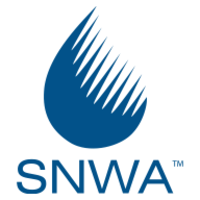Golf courses and the environment go hand in hand. To many outside of the golf industry, the common theory may be that golf courses and golf course owners are the worst wasters of water in the state and that golf courses, as a whole, are bad for the environment.
The fact is that golf courses–led by the best superintendents and maintenance staffs in the industry–are at the forefront of conservation and other ways to ensure our environment thrives.
The golf course industry works closely with local water authorities to conserve the maximum amount of water possible. In Southern Nevada alone, golf courses have reduced turf imprints by more than 1000 acres over the last decade and in addition to other conservation efforts have saved more two billion gallons of water–and counting.
In addition, golf courses are committed to being a positive addition to the environment and several have been named official Audubon Society Sanctuaries for wildlife and serve as flood zone outlets in times of rain.
The Nevada Golf Alliance members are leaders in protecting and conserving the environment at every level.
Golf Courses in Southern Nevada are limited to 6.3 acre-feet of water per irrigated acre annually. Each golf course must submit its own water-use reduction plan containing at least the following elements:
Golf courses in the City of Las Vegas are subject to turf restrictions set at 5 acres average per hole, with a maximum 10 additional acres for driving ranges.
Golf courses in Southern Nevada have removed over 900 acres of turfgrass, saving over 2 billion gallons of water. Recycled water represents 35% of all golf course water use in the Southwest Agronomic region (Southwest includes Southern Nevada) (GCSAA Water Use and Conservation Practices on U.S. Golf Courses, Phase II, Volume 1).
Over 45% of respondents (Southwest Region) surveyed in the GCSAA Water Use and Conservation Practices on U.S. Golf Courses (Phase II, Volume 1) have adopted recycled water use. The national average is just above 15%.
Water use in the Upper West/Mountain Region (including Northern Nevada) decreased by 5.4 % from 2005 to 2013 according to the GCSAA Water Use and Conservation Practices on U.S. Golf Courses (Phase II, Volume 1).
Superintendents employs numerous methods to reduce water use including:
A few specific examples:

Water Smart Landscaping-Golf Course Participation
